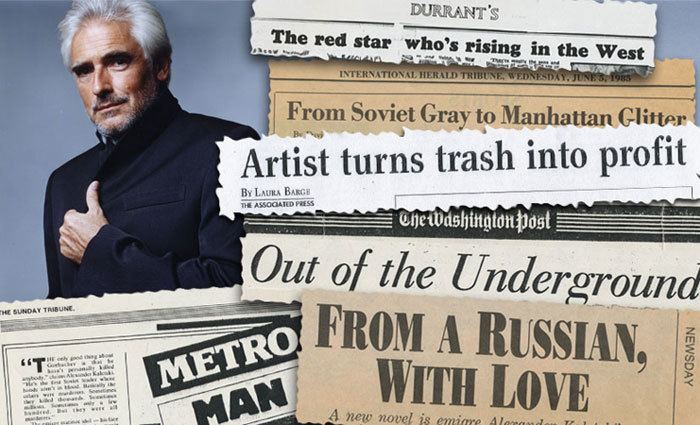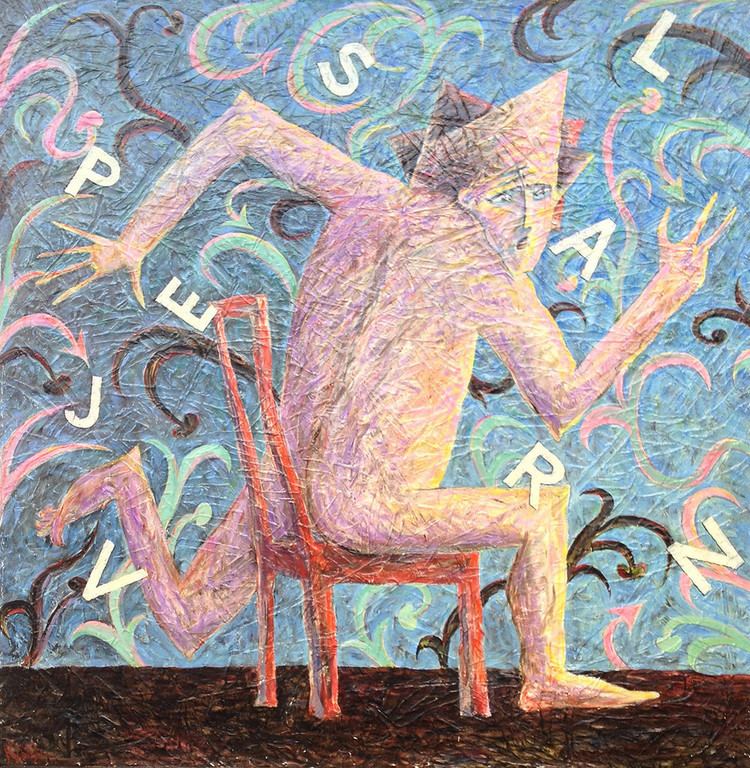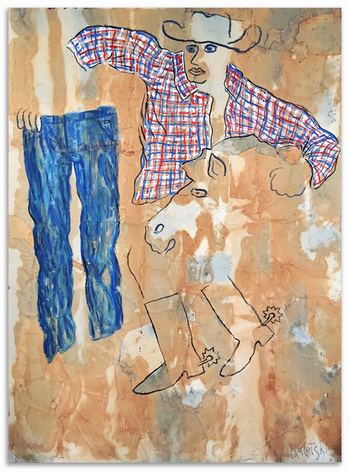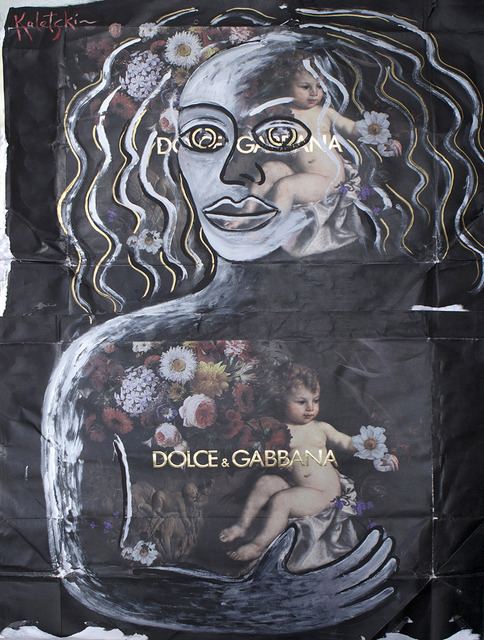Movement Abstract Expressionism Period Abstract expressionism | Role Artist Name Alexander Kaletski | |
 | ||
Books Cardboard people, Metro: A Novel of the Moscow Underground, Metro: Moscou underground | ||
Alexander kaletski the claryville sessions 2013
Alexander Kaletski is an American contemporary artist. Kaletski became famous with Cardboard paintings he created by using cardboard boxes he finds on the streets of New York. He works in the varieties of medias and styles. Kaletski makes oil paintings, collages, sculptures and videos.
Contents
- Alexander kaletski the claryville sessions 2013
- Fragile alexander kaletski and roy villa
- Life
- Career
- Exhibitions
- References

Fragile alexander kaletski and roy villa
Life

Born in Soviet Russia, Kaletski studied acting in Moscow from 1965 to 1969 and went on to a highly successful career on stage, television, and film productions. At the same time he held underground art shows and performed songs of protest. In 1975, fleeing political prosecution and the threat of arrest by the KGB, artist and author Alexander Kaletski left the USSR. He went first to Vienna for a week, then to Rome for a month, and finally New York where he initially lived in a welfare hotel, then a room in Queens and finally an East Side studio he still uses today. When he came to America, Kaletski gave a nationwide concert tour of his Moscow underground songs, eventually appearing on the Merv Griffin television show. He taught Russian, designed fashion fabrics, illustrated books. In 1985 he published semi-autobiographical novel "Metro: A Novel of the Russian Underground" (Viking) which became an international bestseller. This year Alexander has finished two novels - Darkness of Light and Bible Thief.
Career

Kaletski’s first love was always painting. As a child he won several art competitions. At the time, in Soviet Russia only officially designated artists were allowed to legally sell their work, which was forbidden to be abstract, surreal or critical of Soviet life. Kaletski refused to paint in a style of socialist realism. But he painted anyway and went underground, where he found a thriving culture that provided him with an audience for his art and songs. In the Moscow underground Kaletski was working on the series of watercolors which he was selling to the foreigners on the black market.

When he left the USSR, Kaletski carried with him these watercolors. During that time in the Soviet Union, the works of unsanctioned or “non conformist” painters were forbidden and exhibiting as an outsider was considered a serious crime. Forgoing other necessary belongings, the artist had to pay for the release of his own pieces. When Alexander arrived to America his watercolors were immediately exhibited in many universities around the United States, constituting some of the earliest non-conformist art to be viewed in America. His works surprised audiences as they showed unexpectedly that behind the Iron Curtain existed not only gloom and sadness, but also humor, beauty and hope.

During his first years in America, as an artist without money to buy paint or canvas, Alexander was drawn by his natural talent for improvisation to the thousands of cardboard boxes that litter the streets of the Big Apple. Kaletski became enthralled with the high quality of disposable packing materials in the USA. For the artist, those boxes provided unique, if unusual, components for the creative process. Beginning with commercial cardboard packaging he collaged the material adding line and color. The resulting artwork reveals, informs, provokes, but most often, amuses the viewer.

Alexander Kaletski was the inaugural exhibition for Dillon Gallery when it opened in Soho in 1994. In the last seventeen years the gallery has presented numerous exhibitions of the artist’s works, the most acclaimed being his Cardboard People exhibition, which opened in 1996. The show became an instant success. Since then Alexander Kaletski has regularly exhibited his paintings in museum exhibitions in the USA and abroad (Austria, England, the Netherlands, Switzerland, Russia, and Japan) presenting to the audience a variety of styles, techniques and concepts.
Exhibitions

Solo Exhibitions


